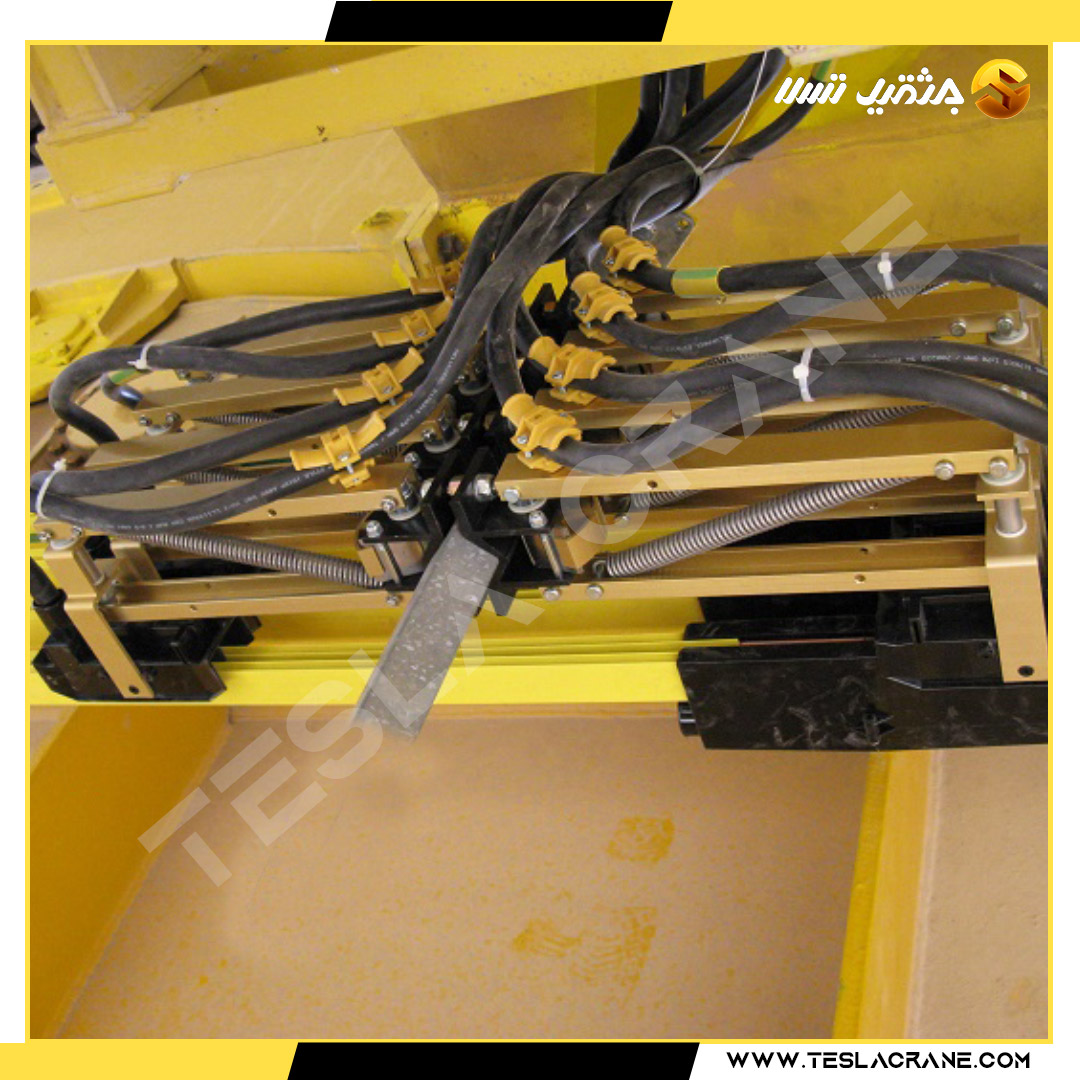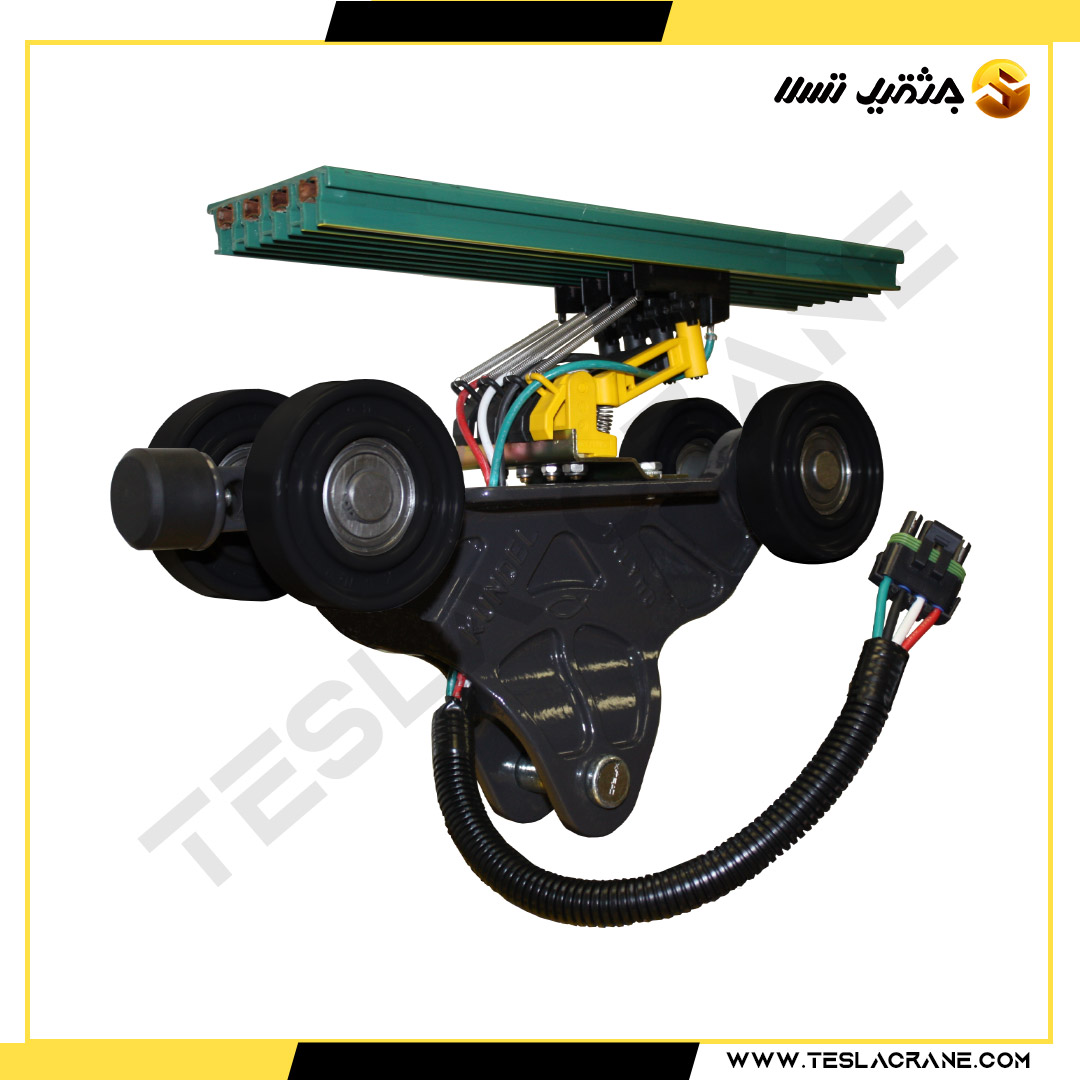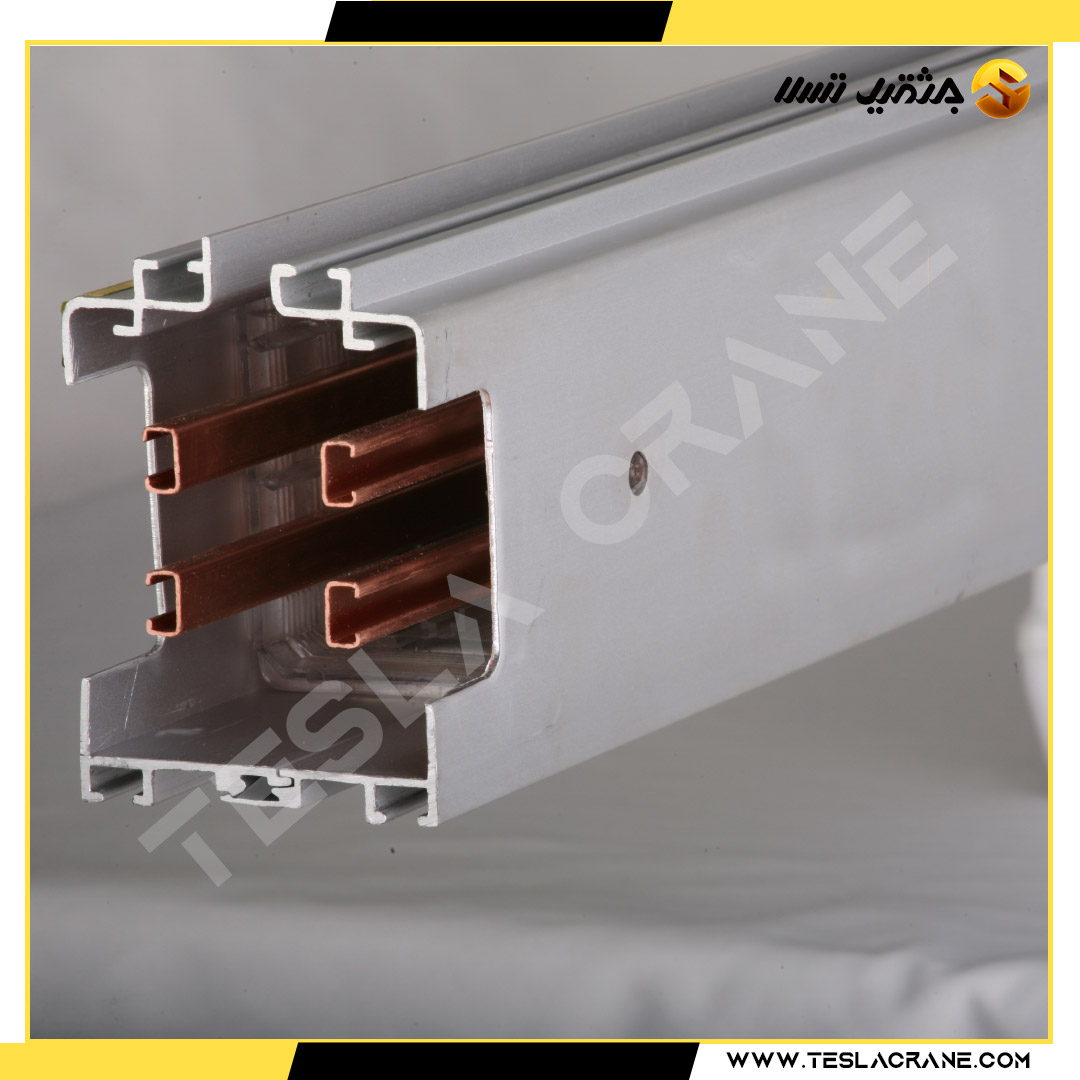

Power supply systems are one of the most important elements of a crane and hoist system. In power supply systems, in addition to the power supply (including three phases), control controls can also be made through power supply systems، Becomes.

It consists of a series of metal belts or rods made of steel, galvanized, copper or stainless steel depending on the application and the amount of amps, as well as a non-conductive strip that covers it from three sides as a cover. Electric busbars are usually installed under or inside the carrier beam and transmit power by brush. When the length of the hall (shed) is long, expansion parts should be used, which should also be used for longer distances with more feed.

Flat cable system and C-rail in short distances (about 40 meters) perform the task of supplying electricity to the crane. In halls where there are two or more cranes, C-rails and cables can no longer be used and the power bus must be used.
But in any case, flat cable and C-rail are used for power supply. Performs the task of transferring electricity from the main electrical panel to the crane lift.
The flat cable and C-rail system The electrical connectors are installed parallel to the carrier beam or the main crane beam, and the pulleys travel along the C-section of the rail and hold the cable with it. Flat cable and C-rail systems are a solution for hazardous and explosion-proof environments.
